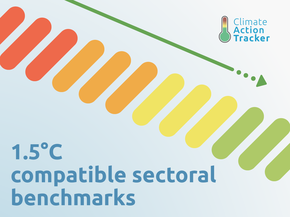Country summary
Overview
NDC update: In April 2021, the United States submitted an updated NDC. Our analysis of its new proposed target is here.
US emissions in 2020 will be lower as a result of the COVID-19 pandemic, but the Trump Administration’s continuous rollback of climate policy and its response to the pandemic will counteract some of the drop in emissions. The administration has not initiated a green recovery but has instead used the pandemic as justification to continue relaxing environmental regulations, allowing polluting industries to emit more greenhouse gases during the crisis and exempting them from penalties for violating these rules. The CAT continues to rate the US as “Critically insufficient”.
We expect US GHG emissions in 2020 will be 10%–11% lower than 2019. Restricted travel mobility has impacted the transport sector, which is responsible for the largest share of GHG nationwide, decreasing the consumption of motor gasoline by 24% in the second quarter of 2020 compared to 2019, year-over-year.
Natural gas consumption is also expected to decrease by 3% in 2020 from the 2019 average, mainly because of lower consumption in the industrial sector. Electricity consumption in the US will decline by more than 4% in 2020. The EIA estimates that coal-fired electricity generation will fall by 31% in 2020, natural gas increase by 3% and generation from renewable sources will increase by 10%.
The Trump administration has not initiated a green recovery. Instead, it has used the pandemic as justification to further relax environmental regulations. Initial proposals of the stimulus package by the Democrats included direct support to clean energy development, including investments in green infrastructure, an extension of the federal tax credit for wind and solar energy and a requirement to airlines to set emissions reduction targets in order to have access to the stimulus. The Republican’s proposal for the recovery stimulus included USD 3 billion for the purchase of oil to increase the country’s petroleum reserves and strengthen the oil industry.
The final bill of the stimulus package included none of these proposals. On March 27, President Trump signed the CARES Act into law, which included a USD 2 trillion recovery stimulus in loans and grants to prevent companies from failing and laying off workers. The final stimulus included a bond bailout worth USD 750 billion from which at least 90 fossil fuel companies can benefit.
The Democratic presidential candidate, Joe Biden, unveiled in July 2020 a USD 2 trillion economic recovery plan focused on clean energy investments and the creation of green jobs. The ambitious plan outlines concrete targets, including achieving an emissions-free power sector by 2035, upgrading four million buildings to meet the highest energy efficiency standards and drive innovation and cost reduction in critical clean energy technologies including battery storage and green hydrogen. The plan also calls for the creation of an office of environmental and climate justice at the Justice Department.
The Trump Administration has continued with its campaign to systematically walk back US federal climate policy. The government has passed a new rule on automobile fuel efficiency to roll back Obama-era vehicle standards, revised energy efficiency appliances standards, and weakened regulations on the release of mercury from oil and coal-fired power plants. The Trump administration, through the Environmental Protection Agency (EPA), has suspended the enforcement of environmental rules in response to the pandemic. These rollbacks are only the latest in a series of policy reversals. However, many states are pushing back against the rollbacks with legal challenges.
The CAT’s US emissions projections for 2030 are 5%–10% lower compared to our previous projections in December 2019, mainly due to the impact of the pandemic on emissions and the greening of the electricity sector due to market forces. The projected drop in emissions due to the pandemic would enable the US to meet its 2020 targets. The emissions projections for 2020 are 20%–21% below 2005 levels, which is 2–7 percentage points lower than the 2020 target (excl. LULUCF). Had the US remained in the Paris Agreement, it may have been able to meet the lower end of its 2025 target with post-COVID-19 current policies.
Had the Administration remained in the Paris Agreement, the CAT would have rated the 2025 target as “Insufficient”. However, given the Trump Administration’s decision to withdraw from the Paris Agreement, which nullifies the target, we rate the US as “Critically insufficient.”


Projected emissions in 2030 decreased by 5%–10% below our December 2019 assessment. This reduction is driven by the impact of COVID-19 and lower emissions in the electricity sector, but which are partly offset by an increase in emissions from new policy rollbacks:
- Reduced emissions in 2030 due to a steep decline in emissions in 2020 as a result of COVID‑19;
- Emissions projections are further reduced by lower emissions in the electricity sector. The EIA’s Annual Energy Outlook 2020 (AEO2020) projects 20% lower emissions from electricity generation in 2030 compared with AEO2019, with increased electricity generation from renewables, and decreased generation from coal and gas;
- Increased emissions projections in the transport sector due to the weaker fuel efficiency standards;
- Increased emissions projections in the transport sector due to the rollback that pre-empts California and other states from setting stricter vehicle standards and establishing Zero Emissions Vehicle (ZEV) programmes. The share of electric vehicles (EVs) in new vehicles sales is projected be 7% in 2025 (down from 12% in 2019 projections) due to the effect of withdrawing California’s ability to set stricter standards. However, California and 22 other states are suing the administration over this new law, and against the revocation of California’s waiver.
Further analysis
Latest publications
Stay informed
Subscribe to our newsletter





